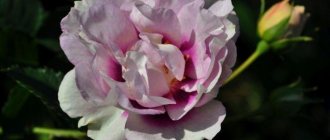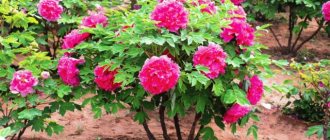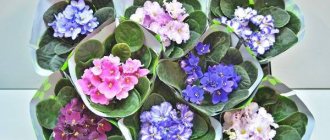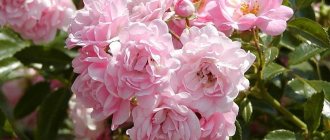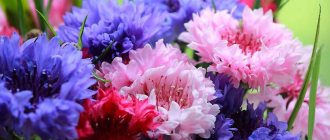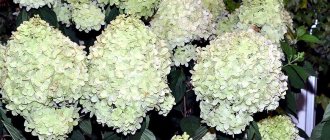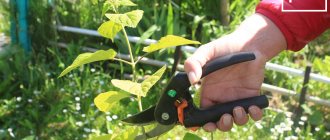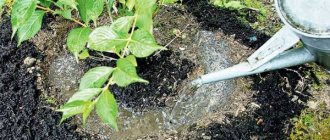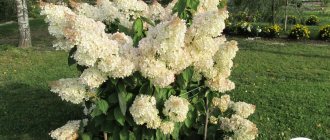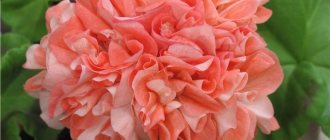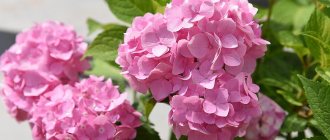Beautiful hydrangeas, varied in color and shape, have long been a decoration of many suburban areas and urban local areas. These plants are unpretentious, grow quickly, some even change the shade of inflorescences or leaves during the growth process. When choosing this crop, gardeners are often also interested in the resistance of certain hydrangeas to low temperatures.
Of all the numerous species and varieties of hydrangeas, the most winter-hardy ones are traditionally paniculate and tree-like ones; most summer residents choose them in the cold, often damp and little snowy winters of the middle zone, for example, in the Moscow region.
Representatives of other species of this initially heat-loving plant often freeze over in harsh winters in our latitudes, but among them you can also find those that can withstand the lowest temperatures even without shelter.
Here is a selection of the best winter-hardy varieties from various garden groups of hydrangeas - take note, among them there really are options for every taste and color.
Hydrangea paniculata Polar bear (Polar bear, Polar bear)
Dutch variety.
Shrub of medium growth rate, powerful, large (1.5-2 m in height and 1.5-1.9 m in width), with rigid, erect shoots. The leaves are large, ovoid, rich green.
The inflorescences are very large (20-40 cm in length), dense, cone-shaped. Sterile flowers with rounded petals with a diameter of 3-4 cm or more. The color changes from pistachio when blooming to boiling white (sometimes even turning pinkish) with age. Flowering on the shoots of the current year, from mid-summer to late autumn.
The variety is exceptionally frost-resistant (up to –40°C), very resistant to diseases and pests, unpretentious in care, and light-loving. Even when frozen, the shoots quickly recover. Protection from drafts is desirable.
- Hydrangea paniculata: the best varieties for the Moscow region (with photos, names and descriptions)
Chic plants for a chic garden - this is about paniculata hydrangea!
Winter hardiness of garden large-leaved hydrangea
Nobody thinks about the winter hardiness of large-leaved hydrangeas, which are sold in our flower shops, usually without the name of the variety. However, most of the widely sold hydrangeas, according to the American USDA classification, which is used by many countries, according to their requirements for growing conditions, correspond to zone 6, that is, they can withstand temperatures falling from -17.8 to -23.6 ° C. Russia is in zone 4, which corresponds to temperature limits from -28.9 to -34.4 °C. Varieties of the 6th zone must be carefully covered, “to the very top,” or, what is more correct and simpler, grown in containers, which must be put away in a cool place for the winter, if one is available, of course.
But how can you grow large-leaved hydrangea if there is nowhere to hide it from frost, and you have to plant the plant in the ground at your own risk? And you are not able to figure out how frost-resistant this or that variety is? Then buy a specimen with powerful stems and a head of inflorescences without any special frills. A plant with flowers, worthy of decorating a garden in the Art Nouveau style, whose stems, moreover, are supported by bamboo supports, is clearly not for your situation.
Check out the photos and descriptions of large-leaved hydrangea varieties and the characteristics of growing these plants.
Hydrangea tree Bella Anna (Bella Anna)
The shrub is powerful, large (1-1.3 m in height and 1.5-2 m in width), with a fan-shaped crown, with rigid, erect shoots. The leaves are large, round, bright green, bright yellow in autumn.
The inflorescences are large (12-20 cm), spectacular, hemispherical in shape. Sterile flowers with pointed petals, small, with a light aroma. The color from the beginning of blooming until flowering is dark pink, almost raspberry. Flowering on the shoots of the current year, from early summer to late September. During the phase of full flower opening, the bush may “fall apart” under the weight of the shoots.
The variety is very frost-resistant (up to –30°C), demanding care, light-loving, but tolerates partial shade. Resistance to diseases is high, but with high air humidity it is susceptible to phyllostictosis and gray rot. Protection from drafts is desirable.
Hydrangea variety Papillon
The variety, whose name translates from English as “butterfly,” has double flowers of extraordinary beauty. In the active flowering phase, the inflorescences are painted a rich, bright pink color. And when flowering ends, the inflorescences change color and become red-green. This color is very unusual, and therefore even when the hydrangea fades, it does not lose its originality and charm. This variety allows you to grow a fairly compact hydrangea, which, due to the density of the inflorescences, really closely resembles a rose.
Hydrangea oakleaf Harmony (Harmony)
The shrub is powerful, very large (2-2.5 m in height), the shoots droop with age under the weight of the inflorescences. The leaves are large, dense, 3-7-lobed, with pubescence below, rich green, purple-scarlet in autumn.
The inflorescences are paniculate, large (20-30 cm in length), very dense, conical in shape, without a pronounced aroma. Sterile flowers with rounded petals with a diameter of 2-3 cm. The color is boiling white, at first with a light green tint; towards the end of flowering they may begin to turn pink. Flowering on the shoots of the current year, from early summer to late September.
The variety is exceptionally frost-resistant (down to –35°C), very resistant to diseases and pests, unpretentious in care, and light-loving. Protection from drafts is desirable.
Hydrangea variety Blueberry Cheesecake
The height of the “Blueberry Cheesecake” bush (and this is how the name of this variety is translated into Russian) usually reaches a meter. At the same time, the plant is still compact and collected. The diameter of the bush of this remontant hydrangea is always greater than its height. The flowering period of the plant begins only in the middle of summer, but the duration of flowering is pleasantly pleasing: the hydrangea with its sweet name retains its stunning appearance until mid-autumn. The flowers of “Blueberry Cheesecake” have a semi-double structure and are painted in a delicate purple color. The bracts are painted pale yellow, which creates a magnificent, delicate contrast.
The foliage of this variety has a rich dark green color until the onset of autumn. In the off-season, the leaves turn red.
Hydrangea macrophylla Mars (Mars)
The shrub is small, spreading (0.8-1.2 m in height and up to 1.5 m in width), with thin, erect shoots. The leaves are medium-sized, thin, rough, bright green, with a serrated edge.
The inflorescences are large (25-30 cm), round, umbrella-shaped. Sterile flowers with rounded petals with a diameter of 3-4 cm. The color is pink with a wide white edge; it can change to a bluer color depending on the acidity of the soil. Flowering on the shoots of the current year, from early summer to late September.
The variety is very frost-resistant (down to –28°C), light-loving, disease-resistant (especially powdery mildew), and easy to care for. Protection from drafts is desirable.
- Large-leaved hydrangea: varieties suitable for the climate of the Moscow region
Paniculate and tree-like hydrangeas are ideal for the Moscow region. But gardeners do not lose hope of cultivating something more exotic, for example, large-leaved hydrangea. We offer an overview of varieties that are grown in our climate.
Brief description of the main types
Types of geranium - what happens, popular varieties
The most popular varieties of perennial plants in the world are paniculate, tree and garden hydrangeas. All of them are distinguished by good decorative characteristics, compact bushes, perfectly adapt to the climate of central Russia and even withstand Russian winters.
Paniculata
Latin name - H. Paniculatasieb. The natural habitat of this beautiful plant with soft pink lush inflorescences is Japan.
Botanical characteristics:
- The height of the bush is 1.5 meters, it has a neat round shape.
- The flowering is very lush and friendly.
- The flowers are collected in inflorescences-balls. The diameter of the inflorescence is up to 25 cm.
- At first the petals are white, with a slight greenish tint, but gradually acquire an elegant pink color.
- A powerful root system, its diameter is much larger than the diameter of the crown. Therefore, when digging the soil, care must be taken so as not to harm the crop. The roots are very close to the surface of the earth.
In the wild, panicle hydrangea is often a small tree. It is found in China, Japan, and the Far East. A popular variety of paniculate flower is Dolly, which is easy to care for but very attractive.
These plants are early flowering plants.
Tree-like
You can also find the name in Latin H. arborescens l. The variety's homeland is the North American continent. This is a small tree, not exceeding 1 meter in height. Lanceolate leaves are its decorative decoration. Lush flowering continues for 3 months, covering the period from the second week of July to mid-October.
Tree hydrangea will be an excellent option for decorating a garden plot.
Many varieties are excellent for growing in the middle zone because they are frost-resistant.
Among flower growers, the Anabel variety is especially loved, the main wealth of which is the snow-white lush caps of inflorescences (diameter - 26 cm). In addition, Anabel is undemanding in care and feels comfortable on neutral soils or soils with weak acidity.
Garden (large-leaved)
The variety is suitable for the climate of the Moscow region and is distinguished by long, elegant flowering: almost all summer, this amazing hydrangea will delight its owner with lush, elegant caps of inflorescences. The plant is perennial, decorated with ovoid leaves.
Features of the variety:
- The diameter of the inflorescence is about 3 cm.
- The height of the bush is 2 meters.
- The fruit is a capsule that appears after flowering has completed.
Note! The color of the petals depends on the acidity of the soil; it can be blue (neutral soil), purple (slightly acidic) or white (acidic). It is for this feature that hydrangea is called changeable.
An example of a variety is Endless Summer, with very large inflorescences. It is a frost-resistant variety, but loves moisture very much; if not watered enough, it can die.
Chereshkova
This is an unusual hydrangea - not a bush, but a perennial vine, characterized by increased decorativeness. In the wild, its length can exceed 25 meters, but at home it rarely grows to 3 meters.
It is attached to the surface using aerial roots. It is distinguished by pale rounded leaves. The flowers are greenish-white or pink, and may be light lavender. Collected in an inflorescence with a diameter of 15-27 cm.
Flowering occurs in the second half of summer and ends with the arrival of autumn frosts. The variety tolerates midland winters well, but in more northern latitudes it can freeze.
Despite its unpretentiousness, it is quite rare in areas. The reason is its unusual form. There are two methods for propagation: cuttings and seeds.
Climbing petiolate hydrangea will help tastefully decorate the appearance of country houses and gazebos
Rough
A perennial shrub over 2 meters high, the leaves are thick and velvety to the touch, hence the name. The inflorescences are large, but flat, color options are white, lilac. The plant tolerates the vagaries of weather and frost well, so it is actively cultivated in the middle zone.
Flowering continues from the last days of July to mid-September. For the growth of such hydrangeas, a site in a bright, sunny place with light partial shade is suitable. Protection from winds and groundwater is required. The soil needs to be light and nutritious.
Oakleaf
A very elegant, attractive plant, the leaves of which are similar to oak leaves, hence the name. The shrub reaches 1.5 meters in height.
Peculiarities:
- The leaf blades are large.
- Inflorescences paniculate.
Growing in the middle zone, it does not have time to bloom due to the specific climate. Therefore, it is grown only in greenhouses or greenhouses. Suitable for planting in warm latitudes with mild, short winters.
Ash (gray)
When considering types and varieties of hydrangea for Russian gardens, this species should be described. An unusual plant came from South Asia. The height of the bush is up to 1.5 meters, the leaves are rich green, lancet-shaped.
The inflorescences are lush, the flowers are white or blue (fruitful) or blue and pink (asexual). Flowering period is from June to September. Reproduction is allowed only by cuttings.
Note! The ash variety will delight the eye with lush flowering until late autumn, therefore it is valued by gardeners.
The ash variety is not particularly decorative, but is unpretentious in care
Sargent
This variety of hydrangea came from China. In good conditions, the bush stretches up to 4 meters. The root system is powerful, the branches are thick, the bark is colored red and covered with villi. The leaves are elongated, rich green, the flowers are light purple (fruit bearing) or snow-white (sterile). The fruit is a capsule and appears in early October.
This lilac hydrangea begins to bloom in mid-summer, around the 10th of July. It is distinguished by relative frost resistance and tolerates cold temperatures down to −20 degrees. However, if a more severe winter is expected, then the bushes should be covered with spruce branches, hay, straw or agrofibre for the winter.
Serrated
The serrated hydrangea variety is perfect for growing in the Moscow region, although it requires obligatory covering for the winter. Height up to 1.5 meters, lancet leaves of an emerald hue. The inflorescences are very decorative, lush, sky-blue flowers help to complete any landscape design.
Note! The serrated variety is very dependent on the acidity of the soil, which determines the color of the petals.
An example of a variety of serrated small-leaved hydrangea is Bluebird (Japan). The height of the bush is up to 1.3 meters, the leaves are oval, tiny, with teeth along the edges.
Radiant
When considering what types of hydrangeas there are, one cannot ignore this unusual decorative variety, which received its name due to the non-standard shape of the flowers. However, the plant is not suitable for central Russia and Siberia, because sub-zero temperatures will be destructive for it.
The height of the bush is up to 2 meters, the leaves are elongated, shaped like a heart, the inflorescence is 11 cm in diameter, the flowers are snow-white.
Ground cover
The variety is highly decorative and can be used to beautifully decorate slopes. Groundcover or Himalayan hydrangea is distinguished by rounded leaf blades decorated with cloves along the edges. The color of the flowers changes from snow-white at the beginning of budding to pink and purple in the middle of the flowering period.
Hydrangea serrata Bluebird (Bluebird, Bluebird, Bluebird)
Japanese variety.
The shrub is fast-growing, medium-sized (up to 1.2 m in height and up to 1.5 m in width), strong, branched, with a spreading crown and shallow root system. The leaves are large, ovate, with a jagged edge, rich green, red-violet in autumn.
The inflorescences are of medium size (10-15 cm in diameter), in the shape of a slightly convex shield. The fertile flowers in the center of the inflorescence are very small, rich pink-purple or bright blue; sterile marginal flowers with a diameter of 2-3 cm, their color varies from pale pink or light purple to deep blue or purple, and can change shade with age. Flowering on the shoots of the current year, from mid-summer to late autumn.
The variety is winter-hardy (down to –25°C), resistant to diseases and pests, easy to care for, and light-loving. Protection from drafts is desirable.
Review of winter-hardy varieties for the middle zone and Moscow region
Annabelle is the most unpretentious variety of tree hydrangea with elegant white blooms. It tolerates frosts down to −23 degrees well, but in order to preserve the decorative appearance of the bush, it is recommended to cover it for the winter.
White-pink hydrangea Vanilla Fries will delight the gardener's eye with cone-shaped inflorescences in which white and pink petals form a harmonious ensemble. The homeland of the variety is France, it quickly gained popularity and became a repeated winner of flower exhibitions.
Paniculata Kyushi is also known as Japanese hydrangea and is highly revered in its historical homeland. Actively used in the design of landscape compositions,
Limelight is a variety with green flowers, actively used in landscape design. Used to decorate front gardens and rockeries; this variety looks especially beautiful next to peonies, lilies and irises. Belongs to the group of paniculates. It is a winter-hardy hybrid species with very strong branches that do not break under the weight of massive inflorescences.
Modern varieties are not only unpretentious, but also very unusual
Early Sensation is a standard pink hydrangea, also known as Early Sensation. The shrub remains decorative even in October, the average height is up to 1.5 meters, the crown is very dense. The leaves of this hydrangea are ovoid in shape. It feels great in the climate of the Moscow region, but the conditions of Siberia are no longer suitable for the plant.
Endless Summer original is a large-leaved garden variety that can survive Russian frosts without losing its decorative appearance.
The Holiday variety is a three-color, very elegant hydrangea, also called tricolor (petals are pink, sky blue and soft green). The leaves are also colored in three shades, so you can find another name - variegated.
Note! You can achieve early flowering by covering the bush for the winter.
Hydrangea Bretschneider Purple Queen
The shrub is very powerful and large (up to 3 m in height), densely branched, with a rounded crown, with powerful straight, densely leafy shoots. The leaves are large, oblong, pointed, slightly pubescent on the underside, rich green, yellow-brown in autumn.
This type of hydrangea in Russian-language gardening literature is often mistakenly called ground cover.
The inflorescences are medium-sized (about 15 cm in diameter), umbrella-shaped, slightly fragrant. Sterile flowers are small, with rounded petals. The color changes from white-pink when blooming to purple-red as it ages. Flowering is very abundant, on the shoots of the current year, until September.
The plants are very winter-hardy (down to –35°C), drought-resistant, very resistant to diseases and pests, easy to care for, and light-loving. Protection from drafts is desirable.
Dwarf varieties
Small bushes are ideal for growing along borders or in beautiful flowerpots. Bobo is a paniculate winter-hardy variety with increased decorative value, suitable for cultivation in the middle zone, cream flowers. Sunday Fries is a compact variety with strawberry blossoms. Suitable for cultivation in open ground and use in landscape compositions.
Note! If a dwarf bush has wet black leaves, then most likely the watering technology is broken. The amount of irrigation should be reduced, otherwise the root system will rot.
These are some varieties of the amazing garden ornament, hydrangea. In Japan, this amazing plant is highly revered and is called the Japanese rose. A huge number of varieties, colors and varieties will help even the most demanding gardener make the right choice.
Hydrangea variety Bailmer
If there is a standard of remontant hydrangeas for growing in the middle zone, it is definitely the Bailmer variety, which is part of a series of flowers with the poetic name Endless Summer. At the beginning of the flowering period, the inflorescences are painted a delicate shade of pink. Over time they turn into azure blue. The flowering period begins no earlier than July, usually closer to the middle. At this time, inflorescence balls appear on the hydrangea. They are identical in diameter, which rarely exceeds 25 cm, but never less than 20 cm. The Bailmer variety has beautiful, serrated leaves. The shoots grow up to two meters in height. The flowering plant looks majestic, which attracts the attention of not only flower growers, but also florists: when cut, this varietal remontant hydrangea looks shamelessly magnificent.
The Bailmer variety is the undisputed leader in terms of frost resistance among all large-leaved remontant hydrangeas.
Hydrangea variety Quadricolor
This variety is larger in size than those listed above. Its average height is one and a half meters. The hydrangea bush is quite spreading and lush. The leaves have a rich green color; there are decorative spots on the leaf plate, which significantly increase the aesthetics of the garden plant and its landscape value. The flowers are pink and white, a mixed and very delicate color. By the way, if the soil is acidic, then Quadricolor hydrangea will bloom with blue inflorescences.
Hydrangea variety Nikko Blue
The bright green one and a half meter shrub of the Nikko Blue variety is an absolute classic among hydrangeas that bloom in a soft blue color. The remontant variety in most sources is listed exclusively as blue. However, you can only achieve true color from this flower if you plant it in acidic soil. The beginning of hydrangea flowering occurs in early summer. And if the soil in which the Nikko Blue variety will grow turns out to be neutral or slightly acidic, the flowers on the bush will be white and not blue at all.
Remontant varieties
Remontant hydrangeas bloom not only on last year’s branches, but also form fresh buds that produce shoots with inflorescences already in the year of formation. This allows you to achieve stable flowering, even if the bush freezes a little during wintering. Almost all remontant varieties bloom later than usual, however, they have a much greater chance of successfully surviving the cold. But even such winter-hardy bushes should definitely be covered and protected from late spring frosts.
Endless Summer (Endless Summer, Endless Summer)
This variety series of large-leaved hydrangea is perhaps most often found in the Moscow region, as it is characterized by increased frost resistance. The shrub received its name due to the formation of buds several times per season and abundant long-term flowering. One bush may have inflorescences of different shades.
| Bush height: 1.2-1.5 m. Flowering period : June-September. Inflorescence shape : spherical, up to 10-15 cm in diameter. Color : from pink to blue, depending on the acidity of the soil. Cold resistance : zone 4 (up to –31°C), wintering without shelter is allowed. | |
Magical Four Season (Magical Four Season)
A special feature of the Magical Four Season series is the original spots or stripes on the petals. During flowering, the color changes several times, up to very rare and unusual tones. The varieties captivate with their extraordinary picturesqueness. Thanks to the changing play of colors, these hydrangeas are often called chameleons.
| Bush height: 0.9-1.2 m. Flowering period : July-October. Inflorescence shape : spherical, diameter up to 20-30 cm; the petals have a crinkled texture. Color : As it blooms, it changes from lime to coral blue and bluish, and then to greenish white. All varieties are united by a variable palette of colors, but always including light green at one of the flowering stages. Cold resistance : zone 6 (up to –23°C), needs shelter for the winter. | |
Doppio Bianko (Doppio Bianko)
Delicate remontant hydrangea of Dutch origin, which is famous for its unpretentiousness and abundance of double inflorescences. The inflorescences open earlier than other large-leaved varieties. At the same time, the flowering period can also be considered a record holder for duration. Each flower resembles a miniature bridal bouquet.
| Bush height: 0.7 m-1 m with a width of up to 1.5 m Flowering period : early June (less often late May) – late October. Inflorescence shape : The outer ring of the inflorescence consists of large double flowers, and the center is filled with smaller double flowers. Color : white, changing to reddish in autumn interspersed with green. Cold resistance : zone 6 (up to –23°C), needs shelter for the winter. | |
Forever and Ever
Remontant varieties from the Forever & Ever series captivate with their unusual two-color inflorescences. The flowers can be pink, purple or blue, but with a mandatory wide border. The bushes are low and compact, so the plant is also suitable for container growing. They grow slowly. The bushes are quite compact, so they are often grown as a houseplant.
| Bush height: 0.6-0.9 m. Flowering period : June-October. Inflorescence shape : spherical, up to 25 cm in diameter. Color : white-pink, raspberry-green, pink-red, white, depending on the variety. There must be a petal edge. Cold resistance : zone 4 (up to –29°C), wintering without shelter is allowed. | |
Renate Steiniger
This macrophylla is the market leader in blue bigleaf hydrangeas. However, in order to get the desired bright blue, fertilizing is necessary, to which the variety is quite responsive. Often flowers of different colors bloom on one bush. A fairly hardy shrub, which breeders value because it is able to produce flower stalks already in the year of planting.
| Bush height: 0.9-1.5 m. Flowering period : June-October. Inflorescence shape : hemisphere, up to 35 cm in diameter; double flowers. Color : As it blooms, the color changes from white to forget-me-not. On alkaline soils it turns pink, on acidic soils it acquires purple hues. Cold resistance : zone 6 (up to –23°C), needs shelter for the winter. | |
Schneeball (Schneeball, Snow Globe)
When choosing hydrangea varieties for the Moscow region, it is impossible not to pay attention to Schneeball, whose name (translated as Snow Globe) is completely justified. This is a compact dense bush with large spherical inflorescences-heads of white color. The large (up to 8.5 cm in diameter) flowers with jagged petals make them particularly decorative.
| Bush height: 1-1.5 m. Flowering period : July-September. Inflorescence shape : spherical, up to 25 cm in diameter; the flowers have serrated petals. Color : snow-white, by the end of the flowering period it acquires a greenish tint. Cold resistance : zone 5 (up to –25 ° C), needs shelter for the winter. | |
You & Me (Yu and mi, You and I)
The varieties of the series amaze with the tenderness of their star-shaped double inflorescences. The configuration of the petals varies depending on the variety: for example, in You & Me Inspire they are pointed and slightly curled, while in You & Me Love they are rounded. Unpretentious and hardy, it will decorate the garden with lush inflorescences already in the year of planting.
| Bush height: 1-1.5 m. Flowering period : June-October. Inflorescence shape : up to 35 cm in diameter; The flowers are double and resemble stars. Color : shades of pink on alkaline soils and shades of blue on acidic soils. It begins to bloom with white and cream tones. Cold resistance : zone 6 (up to –23°C), needs shelter for the winter. | |
Blueberry Cheesecake (Blueberry Cheesecake, Blueberry Cheesecake)
The width of this bush with highly branched shoots always exceeds its height. In autumn, the dark green leaves of the plant gradually turn red, thereby prolonging the period of decorativeness of the shrub. The same variety, but with pink flowers, is often called Cotton Candy.
| Bush height: 0.8-1.2 m. Flowering period : July-October. Inflorescence form : caps of semi-double inflorescences with double flowers having a wavy or jagged edge. Color : blue-violet on acidic soil and pink-red on alkaline soil. The center of the flowers is yellow. Cold resistance : zone 5 (up to –23°C), needs shelter for the winter. | |
Early Blue
Early Blue hydrangea has a powerful root system, which makes it possible to grow it both in open ground and in tubs. It prefers sunny places, abundant watering and fertile acidic soils, and will certainly thank you for timely applied fertilizers with a lush cap of blue inflorescences.
| Bush height: 0.8-1.2 m. Flowering period: June-September. Inflorescence shape : spherical, 15-30 cm in diameter; flowers are sterile. Color : blue, when watered with aluminum alum it becomes bright blue; changes to pink when soil pH level is above 4. Winter hardiness : zone 5b (up to –23°C), needs shelter. | |
In some years, remontance may not appear, which means that the bushes will not form inflorescences at the expected time. This usually happens after harsh winters.
Hydrangea variety Green Shadow
If you are looking for an original remontant hydrangea variety, this is the place for you. Green Shadow attracts, first of all, the color of the inflorescences. The scarlet tips of the petals border on the soft light green color of the main part of the flower, creating a very unexpected, but very harmonious combination. The bush of this remontant variety looks quite strict. It rarely exceeds a meter in height. It is noteworthy that neither the leaves nor the flowers fade or become paler under the influence of ultraviolet radiation, that is, at the beginning and at the end of the flowering period, the color of the inflorescences is identical.
Hydrangea variety Blushing Bride
This variety, in fact, is an integral part of the previous varietal variety of remontant hydrangeas. It also belongs to the Endless Summer series and is a pastel version of the Bailmer variety. The watercolor color of the inflorescences, combining delicate colors (from snow-white to lilac, violet and pink), is not the only advantage. This varietal variety is not afraid of pests and has very strong immunity. And, by the way, it blooms again much earlier than others, and this is also a huge plus.
Hydrangea variety Tricolor
The hard and dense shoots of this variety look straight up. Remontant hydrangea “Tricolor” is one of the brightest and most variegated representatives of its group. The white color in this plant is combined with fresh greenery and a delicate lilac tint. The only disadvantage of the variety is that “Tricolor” hydrangeas have an extremely negative attitude towards alkaline soil: in such circumstances, the flowering plant dies quite quickly.
Hydrangea variety Spike
Remontant hydrangeas of this variety are distinguished by unusual flowers. They seem to have corrugated edges processed with a special curling iron. The variety looks very elegant and solemn, comparing favorably with its brothers in the family. The flowers are dark pink. Some of them have a distinct purple tint. It is noteworthy that the Spike variety has very tight inflorescences. The flowers fit so tightly together that some of them are not even able to open completely - due to pressure from neighbors. A distinctive feature of the variety is the juicy bright green color of the leaves.
The main color of the inflorescence - dark pink - is not present on hydrangeas from the very beginning. At first, the blossoming flowers are colored blue-white with a hint of green. They only become dark pink over time.
Planting and care
Climatic conditions in Belarus are ideal for mass propagation of this variety. Remontant hydrangea does not need shelter; it can easily take root using all known methods: dividing the bush, lateral layering, cuttings. When planting, it is necessary to take into account that large-leaved hydrangeas prefer slightly acidic and acidic soils.
It is good to add 200g of superphosphate and 50g of potassium sulfate to the planting hole, mix with peat, leaf humus, and compost. This will be enough for the root system to breathe, and adding a good layer of mulch will save you from weeding. Flowering begins on last year's shoots in June, on new shoots in August. Abundant flowering will be ensured by several fertilizing with mineral and organic fertilizers.
